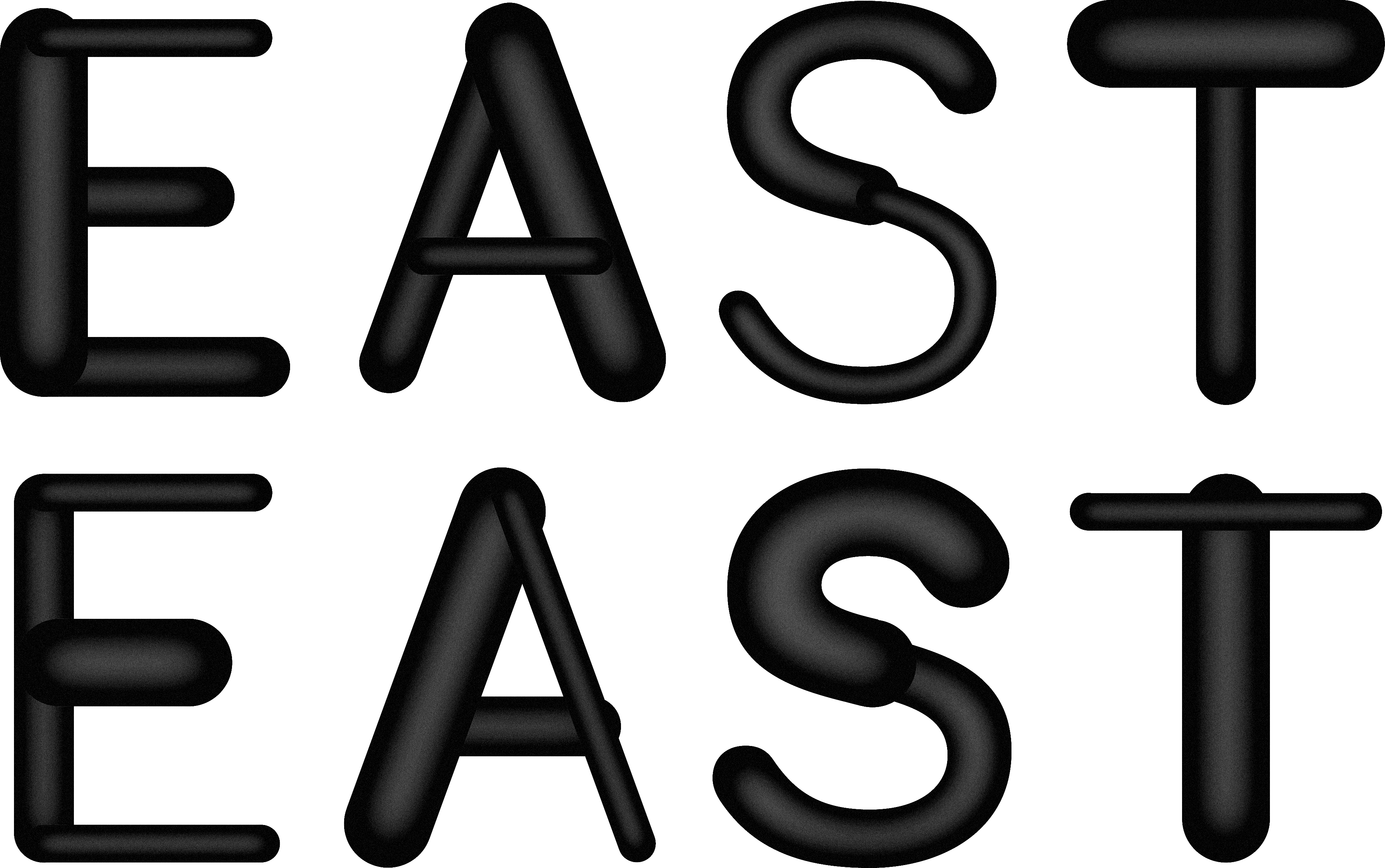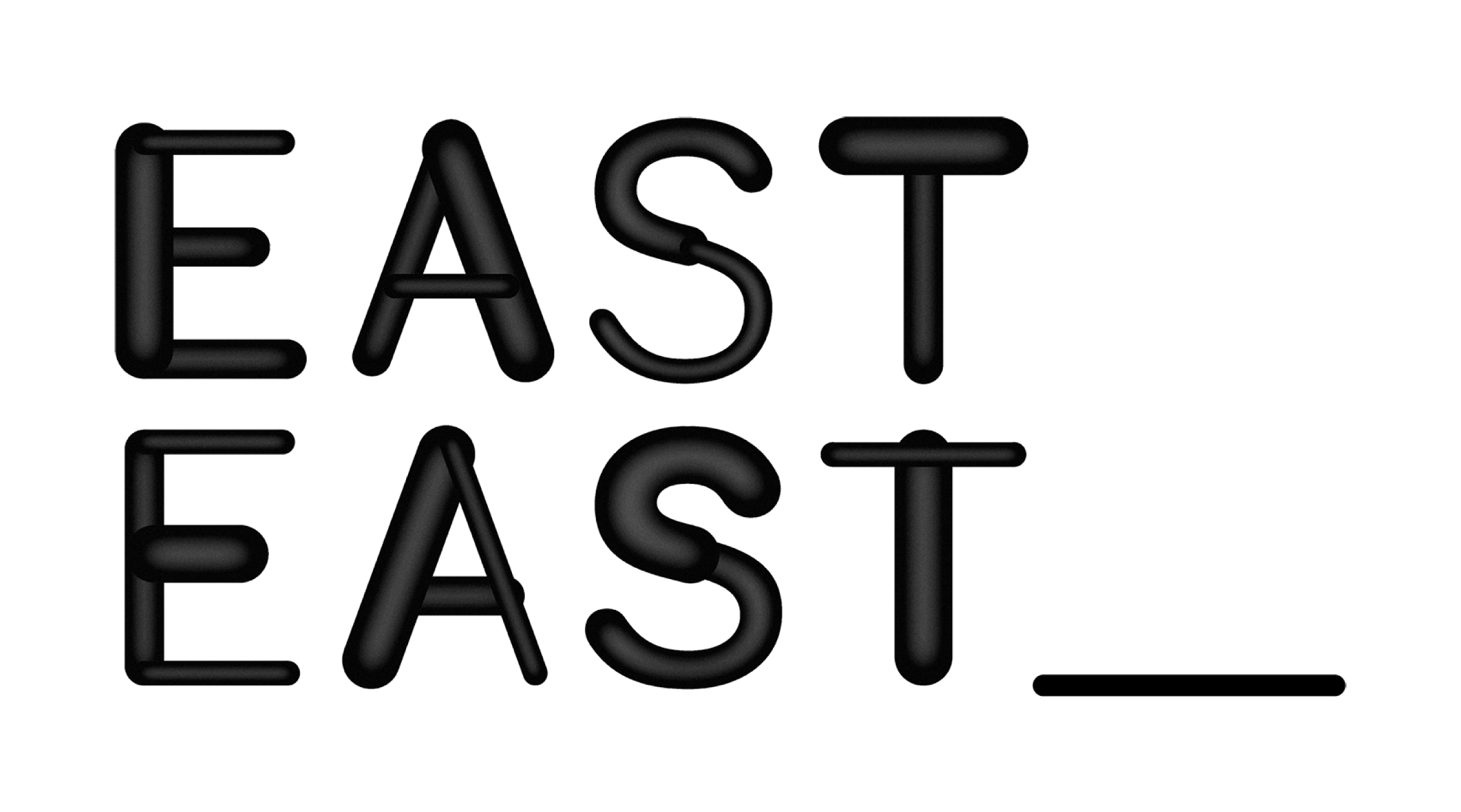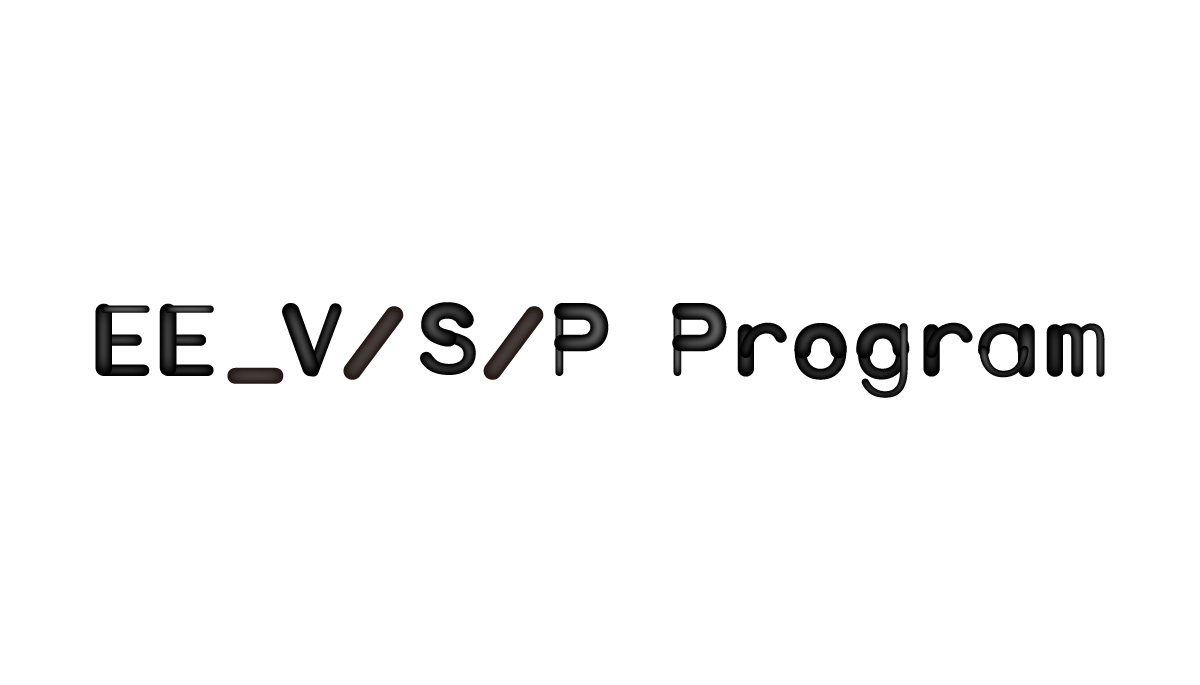Exhibitors
Project
EE_V/S/P Program
EE_V/S/P Program
EE_V/S/P Programは、キュレーターを迎えてビデオ、サウンド、パフォーマンスアートを紹介するプロジェクトです。
ビデオプログラムは、台北と東京を拠点に活動するキュラトリアル・デュオ non-syntax(ノン・シンタックス) が担当します。non-syntaxは、2019年に Jin Qiuyu(金秋雨) と Hsu Chun-Yi(許峻逸) によって設立され、現代におけるイメージの実験的探究に焦点を当てたプラットフォームとして活動を続けています。
サウンド/パフォーマンスプログラムは、DJ、VJ、映像作家、グラフィックデザイナーとして活動するアーティスト JACKSON kaki が担当します。
Artists
Artists
キュレーター
Curator
non-syntax Video Program
non-syntaxは、金秋雨と許鈞宜によって2019年に設立された、現代におけるイメージの実験的なあり方を探求するプラットフォームである。台北と東京を拠点に活動している。
「non-syntax」という言葉は、文中の語の文法的な結びつき、すなわち構文規則を解体し、その空白から新たな創造を見出そうとすることを指している。
異なる地域における創造的な実践をつなぎ、既存のメディアやジャンルの枠組みを再構築しながら、多様な映像が互いに響き合う場を生み出し、イメージのさまざまな可能性を共に考えることを目指している。こうした活動を通じて、これまでアジア各地の多様な団体や美術機関と協働してきたほか、独自のリサーチを通じて、イメージ、視覚文化、メディア、そして鑑賞者をめぐる多様な課題を探求している。
non-syntax Video Program
"non-syntax" focuses on the contemporary experimentation of images, founded by Jin Qiuyu and Hsu Chun-Yi in 2019. As a curatorial duo based in Taipei and Tokyo, "non-syntax" means events occurring within writing, cancelling out self-syntax in the process of character linkage, seeking creativity within the vacuum of meaning. We intend to connect creative practices across different regions, reorganize existing media and genre classifications, allowing diverse images to engage in dialogue with each other, collectively contemplating the various possibilities of images. "non-syntax" centers its exhibition practices on experimental images and has collaborated with multiple Asian groups and institutions in recent years. Simultaneously, through independent research, we delve into issues related to images, visual culture, and media.
JACKSON kaki キュレーター
JACKSON kakiはアーティスト、DJ、VJ、ディレクター、グラフィックデザイナーとして活動する。3DCGや映像、パフォーマンス、インスタレーション、サウンドなどのマルチメディアの表現に取り組み、身体とテクノロジーの関係性を脱臼的感覚に落とし込む。VJとしてはMONDO GROSSOやEYヨなどの国内のアーティストから、Two ShellやKode 9などの海外のアーティストとのコラボレーションを行い、クラブシーンを中心に活動する。アーティストとしては国内のギャラリーなどの展示の参加や、海外の美術館でのAudio Visualのライブを行う。
JACKSON kaki Curator
Born in 1996 in Shizuoka Prefecture, currently enrolled at the Institute of Advanced Media Arts and Sciences. Active as an artist, DJ, VJ, video artist, and graphic designer. Works with multimedia including VR/AR, 3DCG, video, performance, installation, and sound, focusing on the natural aspects of the body and the concept of virtual reality through production and research. Also active as a director and curator of art projects. In 2022, used the Shibuya club 'CONTACT' for the art project 'Imaginary Line'. In 2023, co-curated the Video/Sound/Performance program at EASTEAST_TOKYO with QIUYU JIN, and served as the director of 'ZOR' held at CALM & PUNK GALLERY.
プログラムステートメント
Program Statement
ビデオ
見えるものは光のかけらだらけ
すべてがまだ名づけられる前に、イメージと音だけの世界を、われわれはまだ想像することができるだろうか。
non-syntaxは、異なる対話や思考の交差を通して、単一の物語の枠組みにとらわれない映像の可能性を探求し続けている。過去5年間、パンデミックによる世界の停滞から、人工知能の急速な発展まで、人間の知覚、言語、記録のあり方は劇的な変化を経験し、芸術や知の生産も、もはや過去の延長線上にはない。
本展は「弱いナラティブ」というテーマを掲げ、人々がいかに日常を語り、感じ取り、記録しているのかを改めて問う試みである。
私たちが今置かれている情報環境は、精密かつリアルタイムのデータフローと主流の視点に主導され、休むことなく働き続ける「大きな物語」の構造を構築している。政治的激変から、日常の微細な瞬間まで、すべては複雑で自動的なシステムの中に取り込まれている。多言語の同時翻訳、生成的な映像、要約的な説明、一見すべて可視化にされているが、実際には「可視」の表面の裏には新たな不可視を生成している。しかしこれらの技術は、「描写」と「語り」の名のもとに、私たちが世界を見る角度の傾きを深めている。世界はある種の沈黙に陥っているかのよう――それは言語の欠乏ではなく、過剰な語りの後の失語である。私たちが目にしているのは、出来事そのものではなく、語られた後に残された世界の断片である。
本プログラムで紹介する映像作品は、劇映画、ドキュメンタリー、実験映画、マルチチャンネル映像といった既存の枠を越え、映像が異なる場所や感覚の世界を行き来することを共有する。異郷の道から小さな町の片隅へ、動物のまなざしからアイデンティティのあいだに生まれる対話へ、あるいは地下の鉱山から遠く離れた無人島へ――映像は多層に広がっていく。それぞれの作品は、人々がある歴史や出来事、そして言葉にできない一瞬の経験を、どのように感じ取り、応答しうるのかを映像を通して問いかけている。
「弱い物語」とは、語ることを放棄することではなく、あえて“弱さ”を見せるプロセスである。説明や言葉に満ちた物語とは対照的に、創り手が「見ること」を通して語らないことを選び、あるいは語ることのできない余白や不可視の空間を生み出しながら、出来事をそっと指し示す表現である。このようなあり方は、観客をより開かれた位置に導き、個々の記憶や身体感覚が映像と交わることで、理解し尽くそうとしない“見る”体験を生み出そうとする。
ただ、この小さく続いていく時間のなかで、世界をもう一度静かに感じ取る。
アーティスト
アフマド・アリヤシール
ジュリア・ボルドリ & エロイーズ・ル・ガロ
アン・チュー
ヤニック・ドビィ
トンチ・ガチナ
ビー・ガン
ジェス・ラウ
ブランドン・プール
リア・ジャン
空音央
斎藤英理
Video
What Comes to Light is Always Fragile
Can we still imagine a world composed only of images and sounds?
non-syntax continues to traverse and push against boundaries through a range of practices, seeking to explore the potential of images that exist beyond any single narrative framework. Over the past five years, from the pandemic to the rapid emergence of artificial intelligence — perception, language, and modes of documentation have undergone radical transformation, fundamentally reshaping how art and knowledge are happening.
This exhibition takes “weak narrative” as a point of departure, responding to the current condition of storytelling and reflecting on how we describe, sense, and document our everyday life.
The information environment we currently inhabit is dominated by intricate, real-time data flows and mainstream perspectives, constructing a continuously operating structure of "narrative." Whether political upheavals or the most sensitive moments of daily life, all are absorbed into a complex, automatically functioning system of representation: real-time multilingual translation, generative images, and summarizing descriptions create an overwhelming spectacle that appears transparent yet generates new invisibilities beneath the surface of the "visible."
Yet these technologies, in the name of "description" and "narration," continuously the angle from which we perceive the world. The world seems to fall into a kind of silence—not from a poverty of language, but from an aphasia born of excessive narration. What we encounter is not the event itself, but the residue left behind after the world has been narrated.
The video works in this exhibition move beyond established categories of short films, documentaries, experimental cinema, and multi-channel video installations, instead focusing on the flow of images across different sites and perceptual dimensions—from foreign borderlands to corners of small towns, from the gaze of animals to dialogues between identities, or from underground mines extending to distant uninhabited islands. Each work attempts to redefine how people perceive and respond to a history, an event, or those ineffable moments of experience.
"Weak narrative" does not mean not to tell, but rather a process of self-weakening. In contrast to stories filled with statements and explanations, it represents the creator's choice not to speak (through seeing), or even to create invisible (unspeakable) spaces that point toward the occurrence of things. This narrative condition aims to place the audience in a more open position, allowing individual memory and bodily sensation to interweave with images and the worlds they reference, generating a way of viewing that does not end in explanation. Still, it reconnects us to the world in small and slow ways.
Artist
Ahmad Alyaseer
Julia Borderie & Eloïse Le Gallo
An Chu
Yannick Dauby
Tonći Gaćina
Bi Gan
Jess Lau
Brandon Poole
Leah Zhang
Neo Sora
Eri Saito
サウンド/パフォーマンス
身体は、いつの時代も言語だった。しかし、その文法は常に書き換えられ続けている。
東京という都市は、複数の方法論を同時に走らせることで文化的な厚みを獲得してきた。美術大学という制度的な学びの場では、技法が継承され、歴史が参照され、批評の言葉が磨かれる。一方で、ライブハウスや小劇場などのオルタナティブスペースでは、制度の外側から生まれる初期衝動が粗削りなまま空間を震わせてきた。アングラ演劇が提示した身体の政治性、パンクが叫んだ否定の美学、クラブカルチャーが開いた夜の領域。それらは教科書に載らない方法で、この都市の表現を更新し続けてきた。
この二つの系譜は対立するものではない。その緊張関係こそが、東京という場所の豊かさを形成してきた。制度はオルタナティブな実践を取り込みながら自己を更新し、オルタナティブな現場は制度への批評性を保ちながら独自の美学を鍛えてきた。
しかし今、私たちは新たな地殻変動の只中にいる。
デジタルデバイスの普及は、表現の場所を根本から拡張した。TikTok、YouTube、Instagram。縦型の画面の中で、無数の身体がパフォーマンスを繰り広げている。15秒、30秒、1分という枠組みの中で、身体はフォーマット化された言語となり、アルゴリズムによって最適化され、世界中に拡散していく。部屋が撮影スタジオになり、スマートフォンがステージになる。誰もが自分の部屋から世界に向けて発信できる時代だ。
では、「東京」という土地の意味は、どこへ向かうのだろうか。
東京という土地を舞台にしながら、そこで形成されるリアリティを生き、身体や音の方法を模索していく。そのレイヤーは現実の土地のみならず、インターネットやテクノロジーによって拡張している。それはアーティストだけでなく、鑑賞者もまた同じだ。鑑賞者は鑑賞者であると同時に、発信者ともなりうる。
複数の方法論が交差するなかで、メディア環境の変化に適応することも、意図的に拒絶することも、どちらも表現の選択肢になる。その判断そのものが作品の一部だ。アートに正答がないように、私たちが生きる選択に正答はない。むしろ、その選択の連続によって現在の東京は形成されていく。
この東京という土地で問い続ける。身体とは何か。現場とは何か。表現すること、鑑賞すること、共に在ることは、何を意味するのか。その問いと選択の実践が、EASTEAST_TOKYO 2025におけるSOUND/PERFORMANCEのプログラムだ。
アーティスト
cityofbrokendolls
Tasho Ishii
石田裕己
すずえり×小林椋
楊いくみ
野流
Sound/Performance
Tokyo has gained its cultural depth by running multiple methodologies simultaneously. In institutional learning spaces such as art universities, techniques are inherited, history is referenced, and critical language is refined. Meanwhile, in alternative spaces like live houses and small theaters, raw initial impulses born outside the system have shaken the space in their unpolished form. The political physicality presented by underground theater, the aesthetic of negation shouted by punk, the nocturnal territory opened by club culture—these have continued to renew the city's expression through methods not found in textbooks.
These two genealogies are not in opposition. Rather, it is precisely this tension that has shaped the richness of Tokyo as a place. Institutions have renewed themselves by incorporating alternative practices, while alternative venues have honed their own aesthetics while maintaining a critical stance toward institutions.
But now, we find ourselves in the midst of a new tectonic shift.
The proliferation of digital devices has fundamentally expanded the space of expression. TikTok, YouTube, Instagram. Within vertical screens, countless bodies perform. Within the framework of 15 seconds, 30 seconds, one minute, the body becomes a formatted language, optimized by algorithms and disseminated across the world. Rooms become studios, smartphones become stages. This is an era when anyone can transmit to the world from their own room.
So where is the meaning of "Tokyo" as a place heading?
While using Tokyo as a stage, we live the reality formed there and explore methods of body and sound. These layers extend not only to physical land but also through the internet and technology. This applies not only to artists but equally to audiences. The audience member is simultaneously a transmitter.
As multiple methodologies intersect, adapting to changes in media environment or intentionally rejecting them—both become expressive choices. The decision itself becomes part of the work. Just as there is no correct answer in art, there is no correct answer in the choices we make in living. Rather, it is through the succession of these choices that contemporary Tokyo is being formed.
We continue to ask in this land called Tokyo: What is the body? What is the site? What does it mean to express, to witness, to be together? This questioning and the practice of choice—that is the SOUND/PERFORMANCE program at EASTEAST_TOKYO 2025
Artists
Cityofbrokendolls
Tasho Ishii
Yuki Ishida
Suzueri x Muku Kobayashi
Ikumi Yang
Yaryu




